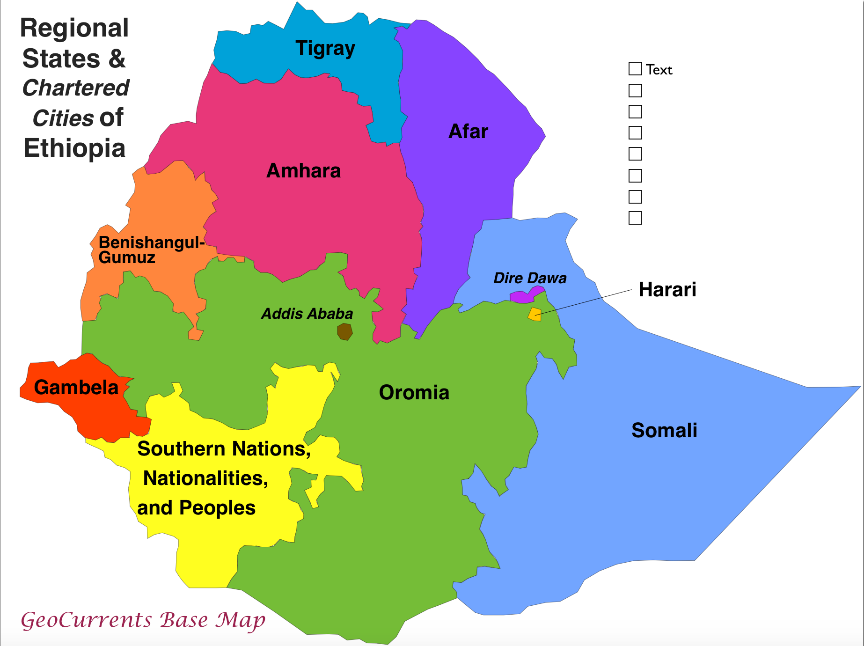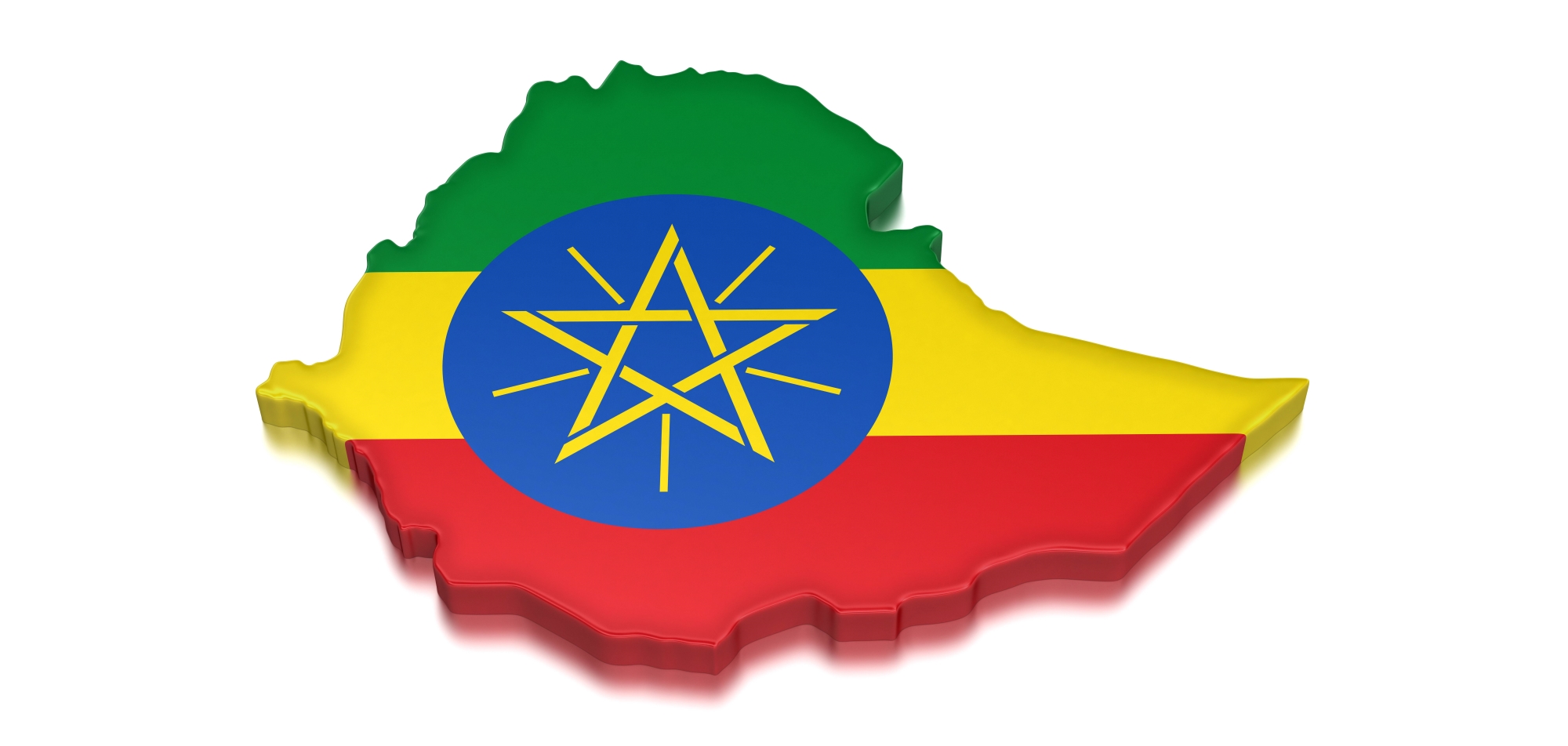Abstract
Territorial autonomy for ethnic groups is an important component of Ethiopian federalism designed to deal with the challenges of ethnic diversity. The constitutional decision to use ethnicity as a basis for the organisation of the state represents a recognition of the political relevance of ethnicity. However, the decision that each major ethnic group should be dominant in one and only subnational unit has elevated ethnic identity to a primary political identity. This approach overlooks other historically and politically relevant territorial identities. The constitution thus misses an opportunity to respond to ethnic concerns without freezing ethnicity as an exclusive political identity.
Introduction
In August 2016, the Rio Olympics came to an end. The men’s marathon was one of the major events to take place on the final day of the competition. Except for the unusual American mix, the race was dominated by the usual suspects; Ethiopian and Kenyan runners were leading for most of the tortuous 42-kilometre race. Although it was Kenya’s Eliud Kipchoge who eventually won gold, it is arguably the silver medallist Feyisa Lilesa, from Ethiopia, who dominated world media after the competition. It is what he did as he crossed the finishing line that drew the unusual media attention: he raised his hands and crossed his wrists above his head. He was expressing solidarity with the Oromo protests which had been taking place across Ethiopia for more than six months.
For the last three years, Ethiopia has been shaken by protests. They began as an objection to the Addis Ababa City Master Plan, which protesters claimed was encroaching on the territory of Oromia State, and ultimately morphed into protests against the marginalisation of the Oromo in public life. Political tension was heightened when members of the second-largest ethnic group, the Amhara, joined the streets in protest against the government. Since then, hundreds of lives have been lost. The situation continued to spiral out of control and forced the federal government to declare, for the second time within two years, a state of emergency in February 2018. The first state of emergency was declared in October 2016 and was lifted in August 2017.
Why is it that a federal system that is primarily designed to address ethnic claims failed to avoid these protests? The gap between the Constitution and practice makes it difficult to argue that the federal solution has failed Ethiopia. The 23-year-old federal constitution, after all, has not been fully brought to life. Ethiopia might have a federal constitution but, strictly speaking, the country is not a federation. Federalism cannot be blamed when the federal credentials of the state are in question. The federal design, however, can be blamed for the form that the protests have taken, for the fault lines that have become the basis for political mobilisation. Here, I am referring to the ethnic based nature of the protests.
Nine states that are largely delimited along ethnic lines and two administrative cities constitute the Ethiopian federation. More than 85 percent of the people live in five of the nine states, including Tigray, Amhara, Oromia, Somalia and Afar, belong to a single ethnic group. Each of these states is also designated after the name of the dominant ethnic group in each state, marking the explicit construction and designation of each state the homeland of a single ethno-linguistic group. This article argues that the decision that each major ethnic group should be dominant in one and only one subnational unit has proved to be ‘the original sin of Ethiopian federalism’. It has elevated ethnic identity to a primary political identity, thereby ‘ethnicising’ Ethiopian politics.

(Geocurrents 2018)
The Opportunity
The decision to use ethnicity as a basis for the organisation of the state marks a major departure from the policies and practices of successive regimes that sought to build a single Ethiopian identity in the image, language, and cultures of a particular ethnic group. It represents a recognition of the fact that the making of the Ethiopian state involved relegating a large number of the non-Amharic speaking population to second class citizens, contributing to the emergence of ethnicity as the fault line that characterises the Ethiopian society. By making ethnic groups a majority in a particular subnational unit, federalism has also provided such groups with a territorial space, which facilitates the preservation and promotion of their language, culture and identity as well as the self-management of their own communities. Although it has been undermined by a dominant political party that functions in a centralised manner, the arrangement provides for a system that can help to promote the self-management of ethnic communities by providing ‘regional elites’ with the means for political participation and representation in the leadership structure of their respective states. This is further facilitated by a policy that allows regional preferences in language usage.
The Fragmentation
The constitutional decision to provide a ‘homeland’ to each large ethnic group and to do so by making ethnic groups dominant in one and only state is not, however, without problems. In as much as it has facilitated the recognition of ethnic diversity and, to some extent, responded to ethnic claims, it has elevated ethnic identity to a primary political identity. The elevation of ethnicity into a primary political identity and the concomitant fragmentation of the population along ethno-linguistic lines has been observed, for example, in the increasing use of ethnicity as a basis for political mobilization. Of the 79 political parties currently registered with the National Electoral Board and that actively participated in the 2015 national election, more than 65 are ethnic based parties. The elevation of ethnicity as a primary political line is also evident in the translation of cultural communities into political communities. Ethnic groups of all sizes have demanded some form of recognition and territorial autonomy. Communities that were regarded as belonging to a particular ethnic group have come to increasingly claim distinctive status. This process of ‘ethno-genesis’ has not always been peaceful. The unremitting demands of ethnic groups of all sizes to be incorporated or transferred into one or another state is another indication of the development of ethnicity as the primary basis of political identity. Some communities do not feel that they belong to the territorial unit they have been demarcated into. This is another consequence of the geographical logic of the federation, which is inherent in the decision of the Constitution to explicitly construct and designate states as belonging to particular ethnic groups, leaving the rest with a feeling of being an outsider.
The essence of the argument is that the territorial design adopted by the Constitution has frozen ethno-linguistic identities and territorial boundaries. This has resulted in the elevation of ethnic identity to a primary political line, waning the formation of cross-cutting or overlapping identities and thereby, facilitating the fragmentation of the population along ethno-linguistic lines. Let it be clear, however, that this article does not claim that politicized ethnicity is the production of the current institutional design. The politicization of ethnicity and its emergence in the Ethiopian political scene harks back at least to the days of the student movement that contributed to the 1974 Revolution(Fessha 2010). Neither is this article suggesting that the elevation of ethnicity into a primary political identity would not have happened if the solution of ‘autonomous homeland’ had not been offered. The experience of multi-ethnic states does not support the claim that minority nationalism and its competing nation-building project does not emerge as significant force in the absence of a homeland solution. In fact, the experience of Ethiopia itself indicates that, without any institutional arrangement resembling territorial autonomy, competing nation-building projects did not only take root but eventually managed to assert state power and make the ‘ethnic question’ the primary question of democratization and stability (Markakis 2011). The claim that this article makes is much narrower: Ethiopia’s territorial design has heightened the political relevance of ethnic identities.
The Road Not Taken
The question, then, is whether the architects of the Ethiopian federation had other alternatives in designing the internal boundaries of the state – a federal design that responds to ethnic concerns without privileging ethnic identities above other non-ethnic identities? One option that the architects of the Ethiopian Constitution had was to design a federation that may not be multi-national but an inclusive state that recognises and, somehow, grants self-management to the different ethnic groups. They could have achieved this by dividing numerically large ethnic groups into a number of constituent units without, however, denying ethnic groups territorial autonomy. This would have involved, for example, the division of the Oromo and the Amhara, including probably the Somali, into a number of ethnically homogenous territorial units. According to this formula, despite the fact that it is split between different units, each large ethnic group would have achieved autonomy in a homogenous unit.
Arguably, two important benefits would have flown from this particular design of the federation. First, this would have provided an opportunity to take into account, in addition to ethnic identity, other identities that are historically and politically relevant in the geographical configuration of the federation. One such historically and politically relevant identity that would have continued to receive recognition had this particular territorial design been implemented is provincialism, a layer of historically formed socio-political identity that can be traced to the days of Historic Ethiopia and is based on place/s and serves to differentiate among individuals that would otherwise belong to the same ethnic group. The Amhara, who speak Amharic and are largely Orthodox Christians, were, for example, divided into four provinces and fought against one another for the control of the throne. The same can be said of the Oromo that, geographically speaking, were spread across many administrative provinces. In fact, that is why authors like Tareke (1991: 151) maintain the view that, in pre-1991 Ethiopia, ‘Oromia, the nation around which [the Oromo Liberation Front, the major armed Oromo liberation movement] has tried to mobilize the peasants, is an abstract idea that relates neither to their recent past experience nor to prevailing objective conditions’, thus, was arguably working to raise Oromo consciousness in a ‘historical void’. Provincial identities were, thus, an important part of the political identities that characterised the socio-political scene in pre-1991 Ethiopia. The relevance of these identities was also kept alive by the military government, which replaced the monarchy in 1974 and continued to use these fault lines for purposes of administrative divisions. Despite the political relevance of these age-old provincial identities, however, the current Constitution chose to demarcate individuals that belong to the Amhara and Oromo ethnic group into one large state each. This ‘putting together’ (see, Stepan 1999) of the Amhara and the Oromo into one state each signifies the imposition of ethnic identity over and above the equally, if not more, historically and politically relevant provincial identities that define members of these particular ethnic groups.
Second, the re-designing would have, in turn, introduced an institutional incentive for intra-ethnic competition. For example, the division of the Amhara or the Oromo into different subnational units would have enhanced intra-ethnic competition. It would have done that by increasing the salience of alternative sub-ethnic identities within these groups, including identities based on religious, social and/or economic interests as well as those based on provincialism. We could have witnessed, for example, the emergence of a northern Christian Oromo state that stands differently from a South-eastern Muslim Oromo state on family and personal matters. And the increasing salience of sub-ethnic identities might have, in turn, brought a number of dividends. First, it would have helped to downgrade the status of ethnicity as the primary basis for political identity. The polity would not have been recognized as a purely ethnically organized federation. This would have enabled the federation to benefit from the flexibility and shifting alliances that could arise from the fluidity and multiplicity of identities. Second, the federation would have experienced less strain as intra-ethnic divisions, it is believed, are less emotionally charged and, as a result, more manageable than inter-ethnic divisions. Third, the emergence of intra-ethnic divisions would have lessened the hegemonic and possibly secessionist pressure that the federal government faces from large ethnic groups. The redesigning of the federation may not have necessarily avoided the development of ethno-nationalism across ethnic lines and replaced it with the political mobilisation of non-ethnic interests, it would have, at least, avoided the emergence of the status of ethnicity as the only or primary basis of political mobilisation.
Remapping the Federation
One must acknowledge that any suggestion to remap a twenty- year old federation raises very serious and complex questions. Can this even be done after 20 years of ethnic federalism? There is no doubt, for example, that the decision to divide the Oromia, the Amhara or the Somali states into different units would be regarded as a policy of divide and rule by the political elites of the communities. After twenty years of federalism that featured an ‘autonomous Oromia homeland’, the idea of the Oromo nation is no longer a construction erected in a ‘historical void’. With respect to Oromia, it might even appear imprudent given the current political climate in which protests that commenced as an objection against the Addis Ababa City Master Plan have spread like wild fire across cities and communities in Oromia. One, thus, must be careful not to impose this arrangement on ethnic groups (see Anderson 2016).
Yet, one must also be careful not to be overwhelmed by the exigencies of the moment and lose sight of the notorious fluidity of ethnic-based political identities. In fact, if there is one thing that the increasing political relevance of what were once less coherent and less politically significant identities tells us, it is the fact that ethnic identities are not fixed and static. One must also be careful not to overemphasise the commitment of politicians to the cohesion of the cultural community they claim to represent. The division of a particular state into a number of smaller states means the multiplication of elected offices and the creation of new civil services. Along with this, comes the power to distribute contracts for infrastructure, including roads, hospital and schools. The creation of new states might thus be attractive for politicians for the simple fact that it represents another opportunity to access power and resources.
Perhaps, the manner in which the proposal of reconfiguring the geography of the federation is presented and pursued matters a lot. Members of the relevant ethnic communities and their politicians must be convinced that this is not an attempt to deny self-management but to facilitate without putting pressure on national integrity. The challenge might lie in the difficult task of ensuring that change comes through an all-inclusive and participatory process that can lead to a negotiated settlement. Perhaps it might help to assure members of the relevant group and their politicians that the door for renegotiating the internal boundaries always remains open. The proposed settlement can include a clause stipulating that people who belong to the community whose ‘homeland’ are now proposed to be divided into different but still ‘ethnically homogenous’ states can be given a chance, after a cooling period of fixed years, to merge if there is a clear support for that. This would, in fact, represent an exercise in self-determination than the federal arrangement that, for the most part, turned cultural communities into political communities by mere constitutional fiat.
Suggested citation: Fessha, Y. 2018. ‘The Original Sin of Ethiopian Federalism’. 50 Shades of Federalism. Available at: http://50shadesoffederalism.com/case-studies/original-sin-ethiopian-federalism/
Bibliography
Anderson, L. (2016) ‘Ethnofederalism and the Management of Ethnoconflict: Assessing the Alternatives’. Publius 46(1), 1-24.
Fessha, Y. (2017) ‘The original sin of Ethiopian federalism’ 16(3) Ethnopolitics 232-246.
Fessha, Y. (2010) Ethnic diversity and federalism: Constitution making in South Africa and Ethiopia. Surrey: Ashgate
Markakis, J. (2011). Ethiopia: The last two frontiers. Woodbridge, ON: James Currey.
Roeder, P.G. (2007). Where nation-states come from: Institutional change in the Age of nationalism. New Jersey: Princeton University Press.
Stepan, A. (1999) ‘Federalism and Democracy: Beyond the US Model’, Journal of Democracy 10(4) 19-34.
Tareke, G. (1991) Ethiopia: Power and protest, peasant revolts in the twentieth century. Cambridge: Cambridge University Press
Further Reading
Anderson, L. (2014). “Ethnofederalism: The Worst Form of Institutional Arrangement…?” International Security 39(1): 165-204.
Clapham, C (2012). Ethiopia. In J. Herbst, T. McName & G. Mills (Eds.) On the fault line: Managing tensions and divisions within societies (pp 150-169). London: Profile books.
Hale, H. (2004). “Divided We Stand: Institutional Sources of Ethnofederal State Survival and Collapse.” World Politics 56(2): 165-193.


